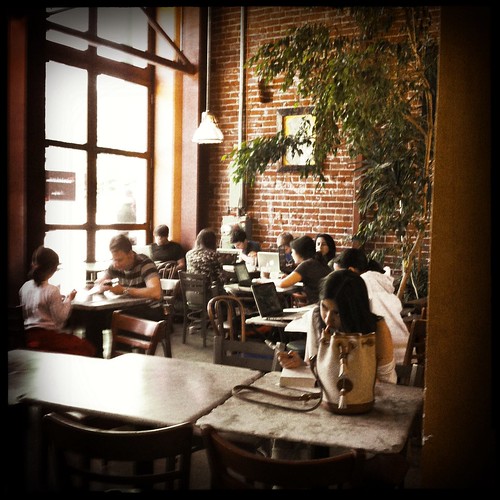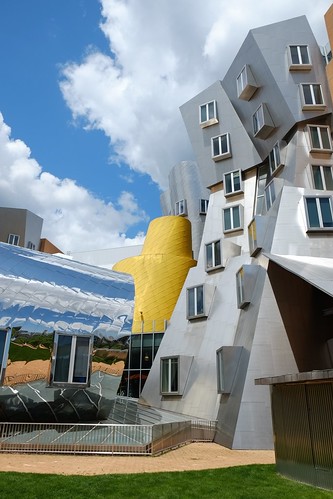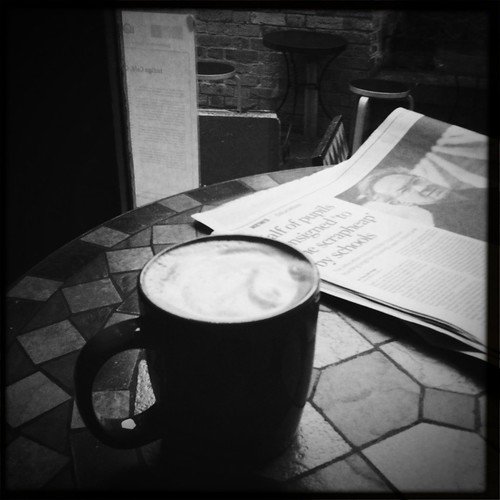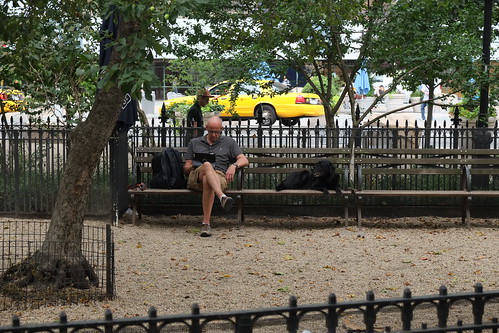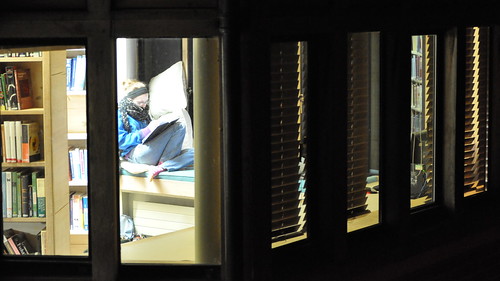Susan Fitzpatrick, the president of the McDonnell Foundation, has an opinion piece in The Scientist about the importance of unstructured, social time in doing good science.
There was a stretch of time when I would spend a week or so each summer visiting some friends who were academic colleagues. Typically, our days were structured around generous amounts of “schmooze” time. First, there was the requisite two-hour breakfast at a quaint, hole-in-the-wall restaurant. These meetings were about more than sharing a meal; we covered a fair amount of ground over coffee, eggs, and whole-wheat toast. We hashed out serious questions related to our areas of scientific interests, argued over the changing politics of academic research, and strayed unflinchingly and irreverently into topics for which we have no particular claim to insight or expertise…. We indulged in those freewheeling discussions in which an out-of-left-field comment could completely alter the way we were pursuing a problem.
Of course, as a senior scientist and administrator, finding that kind of time seems well-nigh impossible; more disturbing, that kind of free time seems to be evaporating from the daily lives of scientists at every stage of their careers.
If you’re a graduate student, you have to demonstrate that you’re a super-brilliant Wunderkind by doing stunningly original work; if you’re a postdoc, you need to show you’re a paper-writing machine even as you apply for grants or bounce babies with your other hand.

Gotta climb that career ladder!
If you’re lucky and good enough to win the tournament of science and become a PI, you now have to schmooze donors, read the tea leaves about what’s hot and not at the NSF and NIH, sit on review boards and editorial boards, chair committees, supervise dissertations, oversee postdocs, etc. etc. ad infinitum. You wouldn’t want to lose your lab, now would you?
In other words, everyone is in danger of being too busy working to do their jobs.
Does it make the science better? Fitzpatrick argues that it doesn’t.
I don’t believe that doing more is always better. Paradoxically, doing more can lead to fewer impactful results—smaller questions, smaller insights, and smaller advances in knowledge. It is unfortunate that just about every professional reward and incentive in academic science requires that more and more be piled onto ever-crowded plates. Can supervising more trainees, being named on more grants, and appearing as an author on more papers really equate to being more productive?
But, Fitzpatrick argues, having useful leisure is no less important now than in the past. Even in an era of computational biology, robots that can do experiments, machine learning, etc., we need to be able think deeply, and seriously. Which requires being able to think in a leisurely fashion.
This doesn’t mean doing nothing; it does mean taking science (or whatever you’re working on) very seriously, letting it settle into your brain and bones, but not holding yourself to a clock or factory model of research and writing.
The anecdotes of researchers at some of the most productive institutions during halcyon times of progress recall a complex web of time in the lab, competitive sporting games, whimsical parties, mountain hikes, and walks on the beach. There seemed to be a fair amount of wine, lots of long dinners, and plenty of bull sessions.
But, I’d argue, it still requires time to think. Time to talk…. To my mind, science benefits when we think more and do less.
I don’t know of many studies that have tried to determine a correlation between scientists’ working hours and productivity, I do know of one that’s really fascinating. In the early 1950s, Raymond Val Zelst and Willard Kerr surveyed their colleagues at the Illinois Institute of Technology about their motivation, work habits and schedules.*
In fact, when they graphed the number of hours faculty spent in the office against the number of articles they produced, they found something surprising. Rather than a straight line that showed a linear relationship between workplace hours and productivity, their data produced M-shaped curve. Productivity was highest among those who spent between ten to twenty hours in the office. (I’ve seen this pattern of four-hour days among creative and prolific people repeatedly, in many fields, across at least a couple centuries.)
The curve then turned downward. People who spent twenty-five hours in the workplace were no more productive than those who spent five; at thirty-five hours, your productivity was half that of your twenty hour-a-week colleagues.
From there, the curve rose again, but more modestly. A researcher who clawed their way out of the thirty-five hour valley, buckled down, and spent fifty hours per week in the lab saw their productivity rise– to the same point as those who spent five hours a week. Van Zelst and Kerr speculated that this rise was concentrated in “physical research which requires continuous use of bulky equipment” and continuous monitoring: most of those ten-hour days were spent tending machines, and occasionally taking measurements. From there, it was all downhill: the sixty plus hour-a-week researchers were the least productive of all.
Val Zelst and Kerr also asked faculty how many “hours per typical work day do you devote to home work which contributes to the efficient performance of your job,” and graphed those results against productivity as well. This time, they didn’t see an M, but rather a single curve peaking around three to three and a half hours a day. Unfortunately, they don’t say anything about total hours spent working at the office and home; they only allude to “the probability that” the most productive researchers “do much of their creative work at home or elsewhere,” rather than on campus.
If you assume that the most productive office and home workers are the same, this cohort is working between twenty-five and thirty-eight hours a week. In a five-day week, that works out to an average of five to seven hours a day.
Now, this is an old study, but I think you’d be hard-pressed to explain what’s changed in the nature of scientific thinking, or creative thinking more generally, that requires we spend many more hours a day at it— other than all the flawed and external reasons The challenge is figuring out how we can get back to a form of work that is creative and prolific, rather than merely busy and rushed and time-crunched.
*Raymond Van Zelst and Willard Kerr, “Some correlates of scientific and technical productivity,” The Journal of Abnormal and Social Psychology, Vol 46(4), Oct 1951, 470-475.
